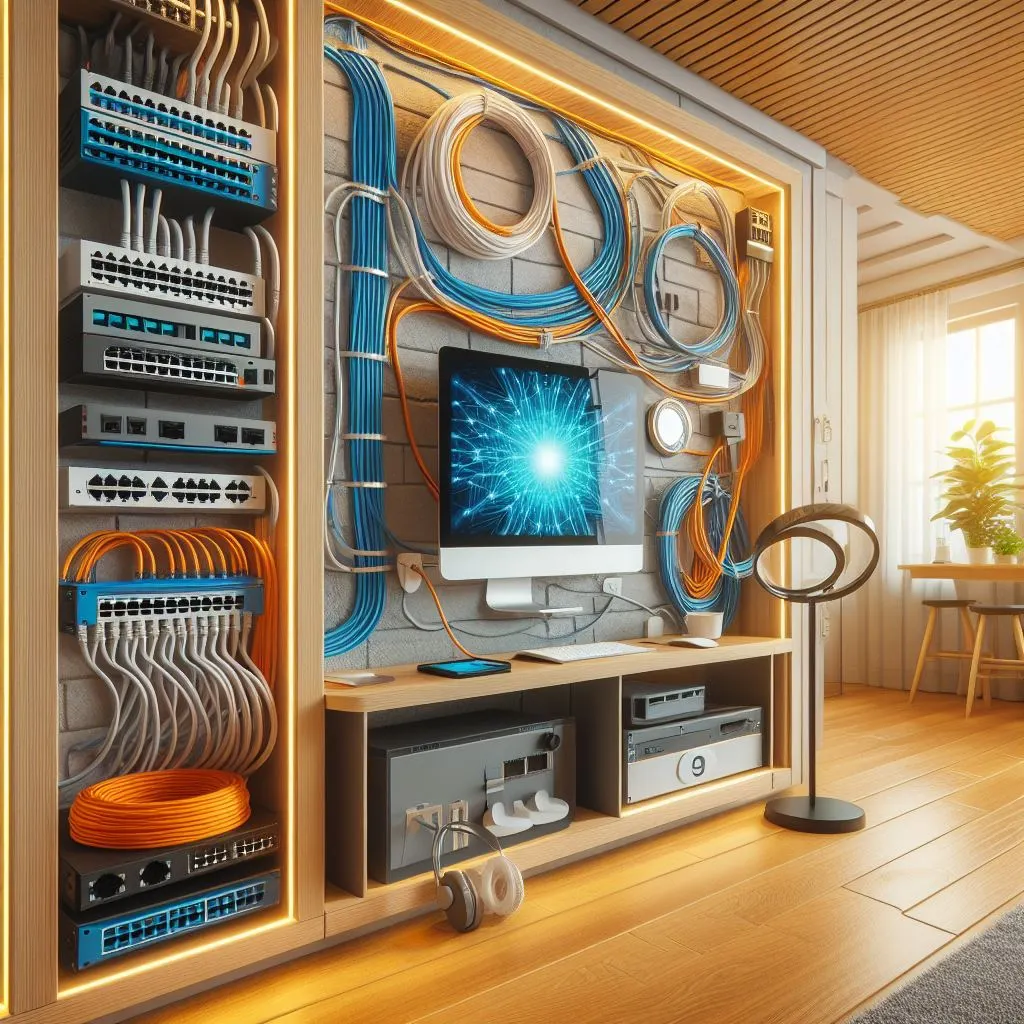Your Guide to Smart Homes: What You Should Know
Introduction:
First, an exploration into the realm of smart home technology will be conducted. Homes have been made automatable and monitorable by modern technology, thereby enhancing our safety, comfort, and energy efficiency.This innovation is not merely an indulgence; rather, it is about the practical application of technology to better our lives.
Furthermore, it is essential that the operation of reliable network cabling and wireless networks in concert be ensured.So that smart home solutions may function without fault. This critical union guarantees that your home remains constantly connected and responsive. And adapting to your lifestyle with the aid of sophisticated yet accessible technology.
Surveillance Video In Smart Homes:
Solid connections are ensured for non-wireless cameras using high-quality network cables, such as Cat 6 or Cat 7. On top of that, you can keep an eye on your house from anywhere thanks to the WiFi capabilities, which allow for remote access.
Similarly, internet-connected smart locks let you secure and open your doors from anywhere using your phone or other mobile device, making home security even more convenient.
In addition, smart thermostats that can be controlled remotely provide convenience and remote adjustment. Alternatively, cable connections are also an option, guaranteeing continuous performance and excellent safety for individuals who value dependability more highly
Bright Lighting in Smart Homes:
With the help of wireless connectivity and network cabling, systems may be operated remotely and are constantly responsive.
Additionally, to safeguard against potential water damage, homeowners can install leak detectors. These sensors connect wirelessly and promptly alert you in the event of a water leak. This will be providing peace of mind and the chance to act quickly to prevent further damage.
Furtermore ,wireless interconnectivity allows smoke and carbon monoxide detectors to provide complete detection by activating all linked alarms .
Although home automation systems’ central systems allow for wireless control of smart gadgets, high-bandwidth requirements or interruption from other wireless networks necessitate the usage of network connections such as Cat 6, Cat 7, or Cat 8.
Smart Home Infrastructure :
A combination of wireless and wired networks, employing Cat 5e, Cat 6, Cat 7, or Cat 8 . Ethernet connections, offers a robust and secure connection for devices.That require constant communication and data, such as high-definition surveillance cameras.
In the case of Ontarian homeowners can self-monitor or hire a professional monitoring service.The latter of which may involve establishing a solid network infrastructure to ensure dependable system communication.
Lastly , before deciding on a wireless, wired, or hybrid smart home infrastructure. It is essential to evaluate individual demands.
Conclusion of Smart Home :
Smart homes represent the next step in the evolution of the household, seamlessly integrating technology into daily life to create a living space that is not only more user-friendly but also more productive.Additionally , these homes offer unprecedented levels of automation and interactivity, boasting features such as remote-managed lighting and security systems that ensure your family’s safety.
Moreover, it’s important to remember that a smart home is not just an assortment of devices.So that, an integrated system meticulously designed to enhance your life.So that, when considering upgrading your house, think of it as a holistic approach to improving your daily living.
Finally, whether you’re well-versed in technology or just beginning to navigate the world of connected devices. The journey toward a more intelligent home is an exciting adventure into the future. It’s a future where comfortable and convenient living is not just a possibility but a standard expectation.


